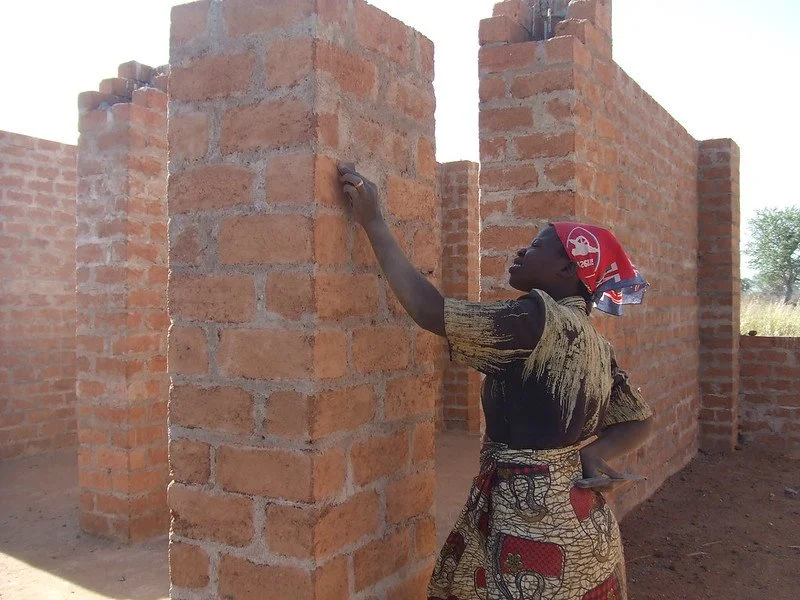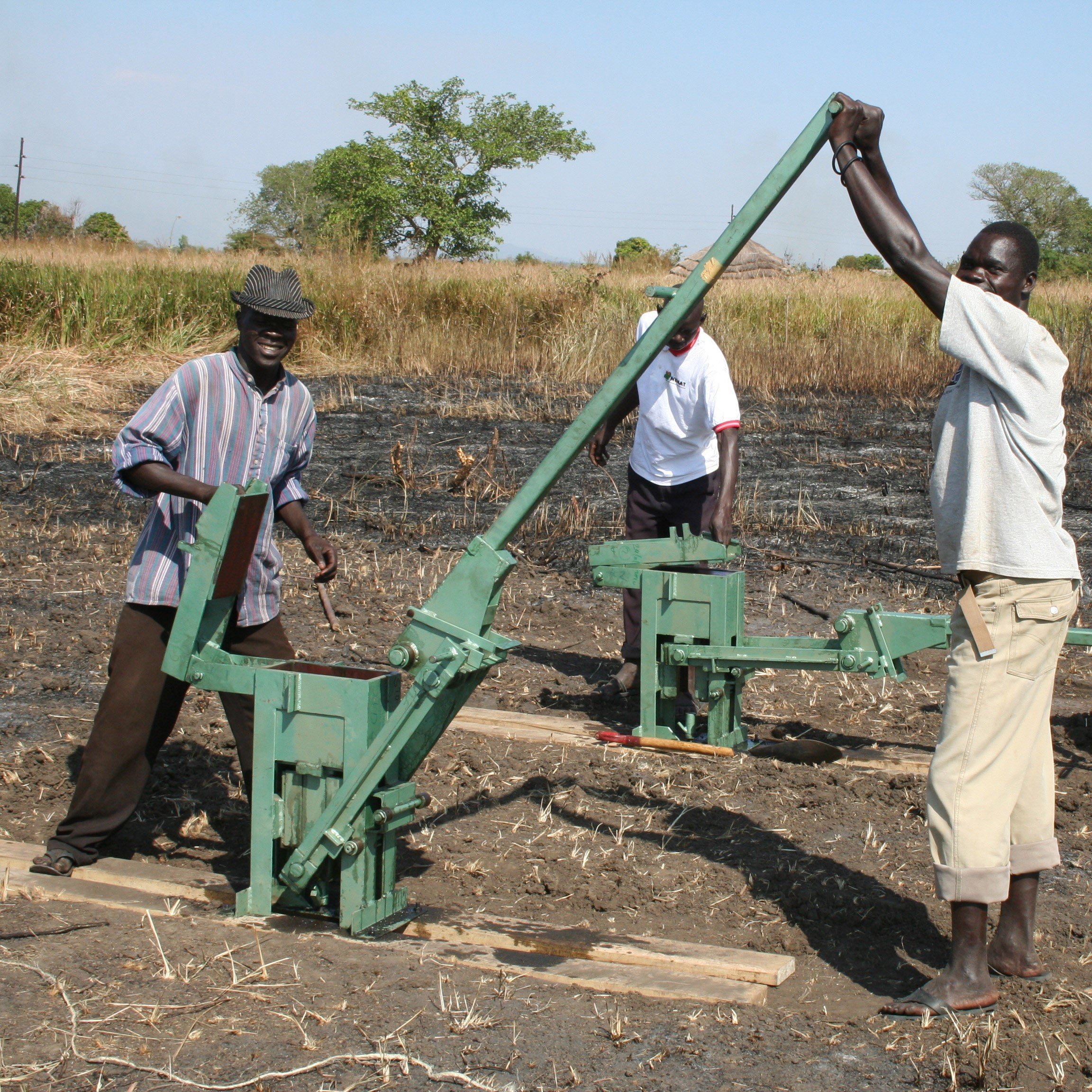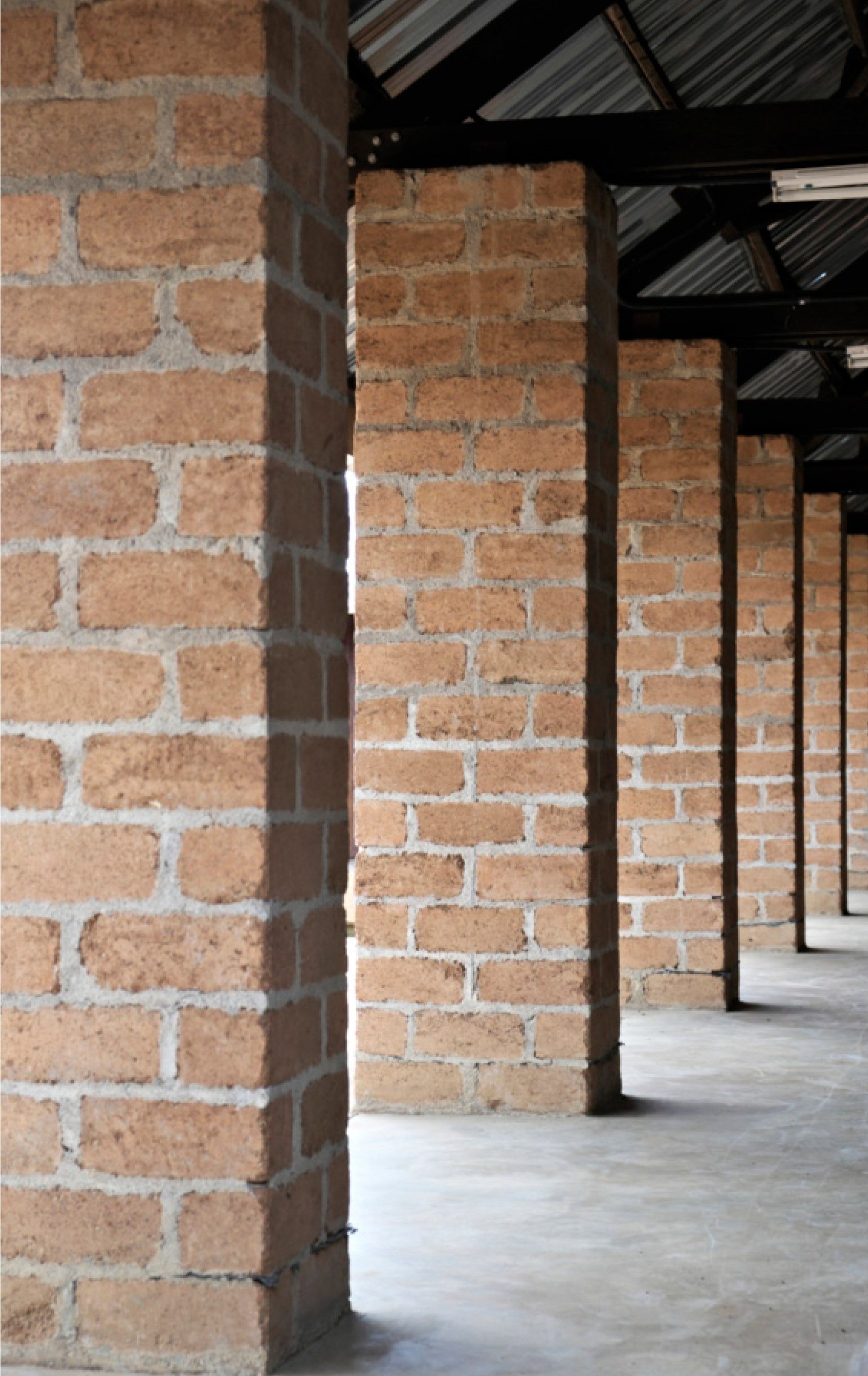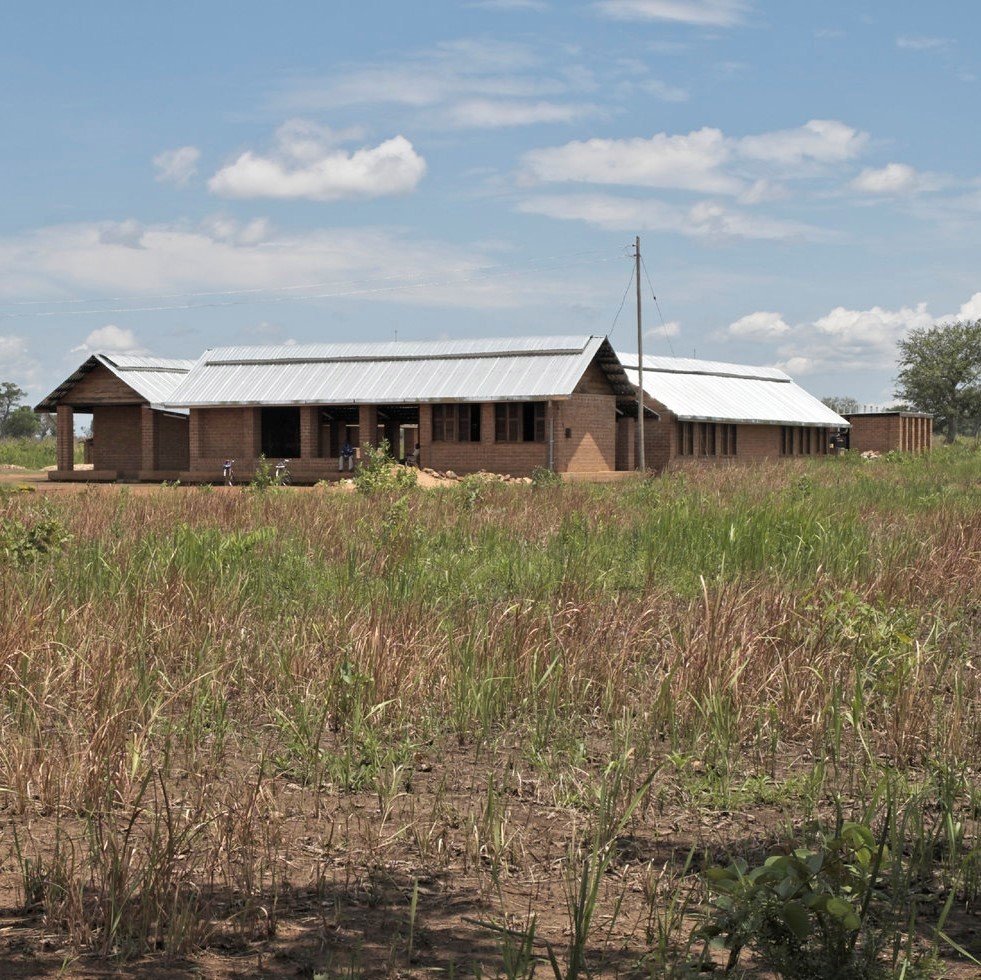The story behind the design: Patongo’s Vocational Training Centre
This week Article 25 were delighted to welcome Henning Stummel back to our office. Henning worked with us as a design partner on a Vocational Training Centre in Uganda, which was completed in 2012. The visit gave our current team a chance to listen to his experience of visiting Patongo, and to ask questions about the design and consultation process.
Henning Stummel sharing his experience with our team.
How the project began
In 2010, Jubilee Action (now Chance for Childhood) appointed Article 25 to deliver a children’s education and rehabilitation centre for displaced young people including former child soldiers in Patongo, Uganda. We invited Henning Stummel Architects to collaborate with us on the design. You can read more about the project origin, design, and impact here.
The first field trip
Henning made a field trip to the area to survey the site and begin conversations with the community and students. Meeting the students, and recognising their need to play and learn as part of their recovery, had a profound impact on Henning, and he was keen to listen to their ideas for the centre.
Site investigations and community collaboration
Henning began initial site investigations by exploring the vernacular architecture, surveying the site, meeting the local team, and spending time in conversation with the children.
The students told him that they felt part of something bigger, with a sense of belonging, when they played football together. One of their key wishes was to have a dedicated space for this. Henning was touched by how football offered the children a safe space to play and recover from trauma. He was spurred on to research the size of football fields and how this could be included in the design.
One of his most memorable moments was when he was able to let the children know they would have a new pitch, the exact same size as Arsenal’s. He said he’ll never forget how their eyes lit up at the thought of being able to play like the professional footballers they admired.
Informed by local architecture and materials
Henning also explained that by visiting the area, the local architecture gave him insight into what the community had lived through, and what resources they had: the most common materials used for building were soil and recycled metal from aid boxes sent by American charities. None of the buildings had windows and were padlocked for security. It was clear that shelter from heat and security both needed to be prioritised in the design.
Cleaning the brickwork, Patongo, Uganda.
Challenges and solutions in the design process
There were a number of different challenges in designing the space, both for security reasons and because the site would be off grid. Henning and the team had to accommodate natural filtration and sewage waste systems, meaning toilet use would be rotated after a year so the waste could compost. Storerooms, which housed valuable teaching equipment, needed to be in the centre of the building to protect from theft, and many of the young girls were survivors of rape and forced motherhood, so the training centre had to include a secure daycare area.
The design also needed to be earthquake resilient - the roof from the colonnade and main roof structure had to be separate, and the building used stabilised earth blocks with reinforced concrete to tie the building to the foundation and ensure corners were strengthened.
The metal roofs were set at an angle with overhangs and gutters to allow for rainwater harvesting, and also had roof vents which allowed hot air to escape during the day, keeping the buildings at a comfortable temperature for learning.
We’re grateful to Henning for sharing his experience of working in Patongo with us. It’s a great example of how our commitment to community consultation and using locally-sourced and produced materials informs our design process.
How the Centre is being used 12 years on
The Vocational Training Centre in Patongo continues to thrive and support over 6,000 vulnerable children, with an average of 122 new students joining vocational training programmes each year. They’re learning skills like hairdressing, ICT, tailoring, or making soap to sell. Betty studied hairdressing at the Centre and says:
“I got a customer this weekend! My mum wasn’t sure about me studying but is now very happy that I have started earning money. She now encourages me, as she sees the course as key to a better future. I will encourage my friends from school to start courses at the Centre too.”
Thanks to this space, and the inclusive and responsive design, hundreds of young people who had no future now have the chance to learn a skill and earn an income with pride.






